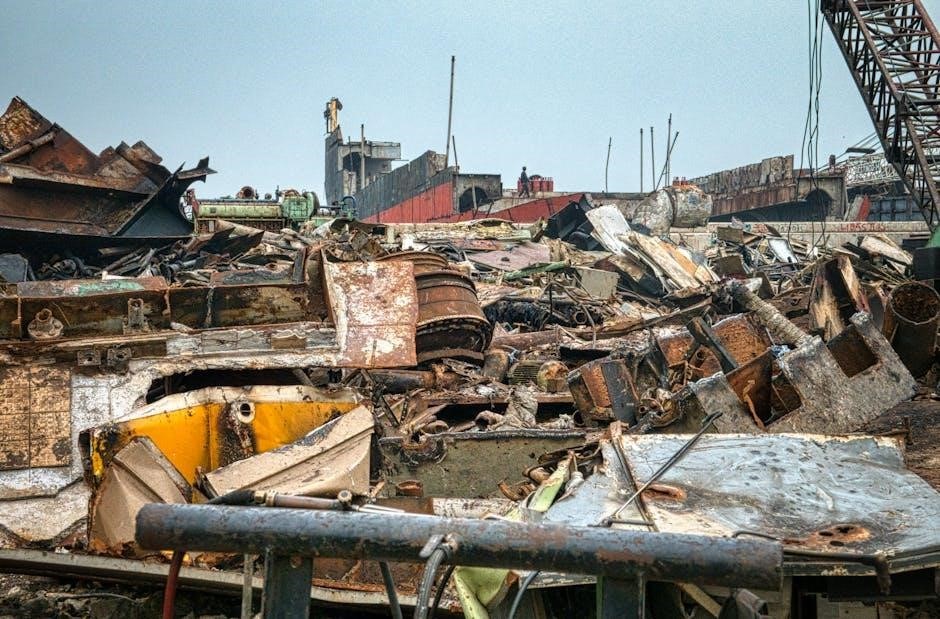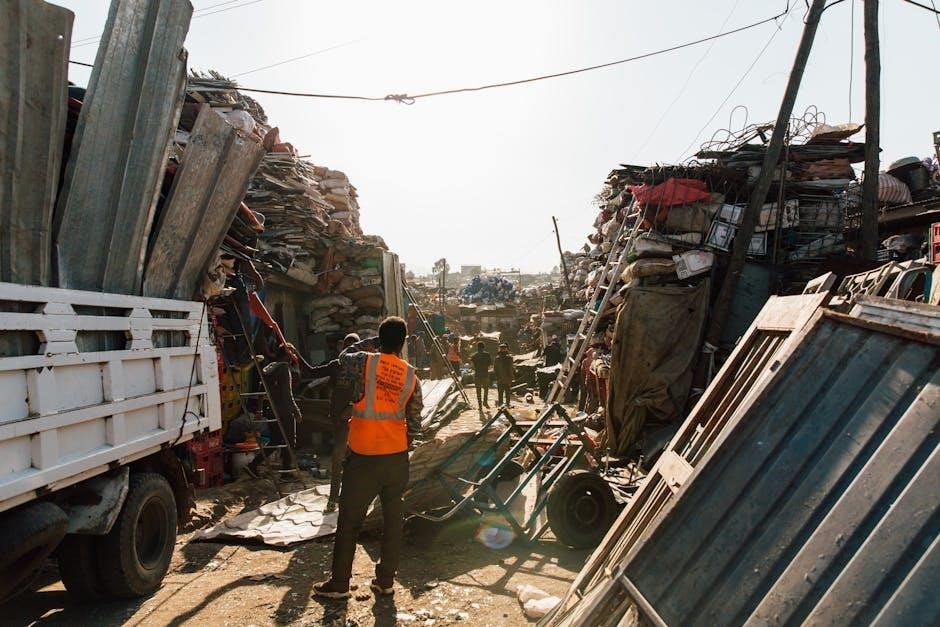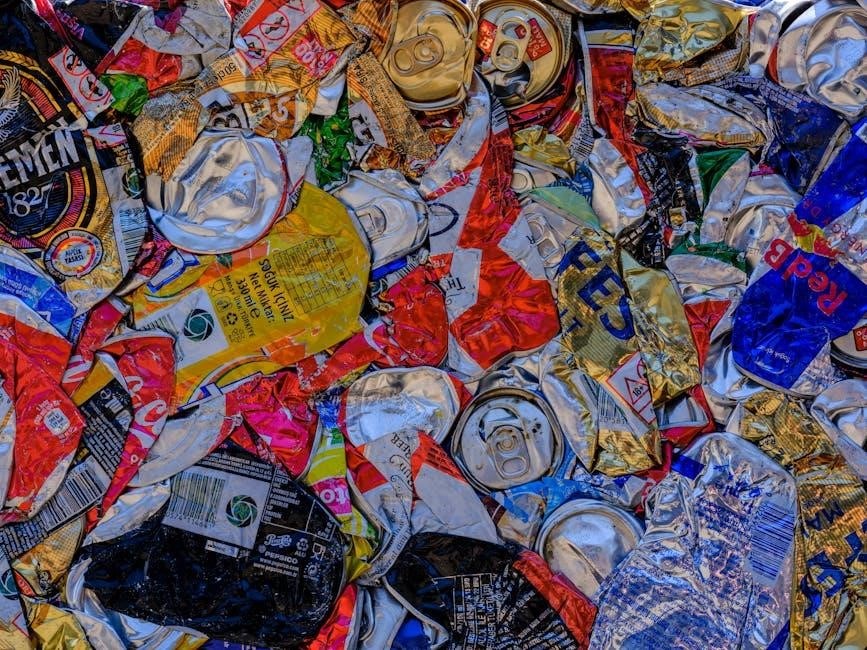Learning scrap metal identification is crucial for efficient recycling and business transactions, using online guides and resources to understand the process and its importance in the industry every day always.
Understanding the Importance of Scrap Metal Identification
Scrap metal identification is a critical process that involves determining the type and quality of scrap metal, which is essential for ensuring the efficiency and profitability of recycling and business transactions.
Using online guides and resources, individuals can learn about the different types of scrap metal, their characteristics, and the methods used to identify them.
The importance of scrap metal identification lies in its ability to help individuals and businesses make informed decisions about the recycling and reuse of scrap metal, which can have significant economic and environmental benefits.
By understanding the importance of scrap metal identification, individuals can take advantage of the many resources available to them, including online guides, tutorials, and training programs, to improve their knowledge and skills in this area.
This can help to increase the efficiency and effectiveness of scrap metal recycling and reuse, which can have a positive impact on the environment and the economy.
The use of online resources and guides can also help to reduce the risks associated with scrap metal identification, such as contamination and misidentification.
Overall, the importance of scrap metal identification cannot be overstated, and it is essential that individuals and businesses take the time to learn about this critical process.

Types of Scrap Metals
Scrap metals include ferrous and non-ferrous metals, each with unique characteristics and uses always available online.
Non-Ferrous Metals and Their Characteristics
Non-ferrous metals are a class of metals that do not contain iron, and they have distinct characteristics that set them apart from ferrous metals. These metals are often more corrosion-resistant and have a higher conductivity than ferrous metals. Examples of non-ferrous metals include copper, aluminum, and zinc, which are commonly found in scrap metal. The characteristics of non-ferrous metals make them highly valuable in the scrap metal industry, as they can be recycled and reused in a variety of applications. Understanding the characteristics of non-ferrous metals is essential for identifying and sorting scrap metal, and online guides and resources can provide more information on this topic. By learning about non-ferrous metals and their characteristics, individuals can better navigate the scrap metal industry and make informed decisions about their business transactions. This knowledge can also help individuals to identify and recycle non-ferrous metals more efficiently;
Ferrous Metals and Their Identification
Ferrous metals are a class of metals that contain iron, and they can be identified through various methods. One common method is to use a magnet, as ferrous metals are typically magnetic. Other characteristics of ferrous metals include their density, color, and texture. For example, steel is a ferrous metal that is often gray in color and has a high density. Cast iron is another ferrous metal that is often identified by its rough texture and dark color. Online guides and resources can provide more information on identifying ferrous metals, including videos and tutorials. By learning about the characteristics of ferrous metals, individuals can improve their ability to identify and sort scrap metal. This knowledge can also help individuals to make informed decisions about their business transactions and to navigate the scrap metal industry more effectively. Ferrous metals are widely used in construction and manufacturing, and recycling them is an important part of the scrap metal industry.

Methods for Identifying Scrap Metals
Identifying scrap metals involves using various tests and techniques to determine metal type always correctly online.
Using a Magnet to Determine Metal Type
Using a magnet is a simple and effective method for determining metal type, as different metals react differently to magnets. This technique is commonly used in scrap metal identification, as it can help distinguish between ferrous and non-ferrous metals. Ferrous metals, such as iron and steel, are attracted to magnets, while non-ferrous metals, such as aluminum and copper, are not. By using a magnet, individuals can quickly and easily identify the type of metal they are working with, which is essential for proper recycling and processing. The magnet test is a crucial step in the scrap metal identification process, and it is widely used in the industry. With the help of online guides and resources, individuals can learn how to use a magnet to determine metal type and improve their scrap metal identification skills. This method is also useful for sorting and segregating metals.

Guidelines for Scrap Metal Transactions
Transactions involve rules and regulations, with guidelines aiding members in completing business transactions correctly and efficiently every time using online resources and documents always available for review and use.
Rules Governing the Addition, Amendment, or Withdrawal of Scrap Metals
The rules governing the addition, amendment, or withdrawal of scrap metals are crucial for maintaining order and consistency in the industry; These rules are outlined in various documents and guidelines, which provide a framework for members to follow. The procedures for adding, amending, or withdrawing scrap metals are designed to ensure that all transactions are conducted fairly and transparently. By following these rules, members can avoid errors and discrepancies that may arise during transactions. The guidelines also provide a clear understanding of the responsibilities and obligations of members, which helps to prevent misunderstandings and disputes. Overall, the rules governing the addition, amendment, or withdrawal of scrap metals play a vital role in maintaining the integrity and efficiency of the industry. Members are advised to review and familiarize themselves with these rules to ensure compliance and avoid any potential issues.

Recycling and Reusing Scrap Metals
Scrap metal recycling programs create art and promote sustainability using environmentally friendly methods always every day.
Programs for Creating Art from Scrap Metal
Various programs have been established to promote the creative use of scrap metal, such as the Scrap Can Be Beautiful program, which provides students with scrap metal to create art pieces, fostering innovation and sustainability.
This initiative has been successful in encouraging young artists to think outside the box and explore the potential of scrap metal as a medium for creative expression.
The program has also helped to raise awareness about the importance of recycling and reusing scrap metal, highlighting the environmental benefits of reducing waste and conserving natural resources.
By providing a platform for artists to showcase their work, these programs have helped to demonstrate the value and versatility of scrap metal, inspiring others to explore its creative potential.
The use of scrap metal in art has also helped to promote a culture of sustainability, encouraging people to think creatively about ways to reduce, reuse and recycle.
Overall, programs for creating art from scrap metal have been instrumental in promoting environmental awareness and fostering a culture of innovation and creativity.
